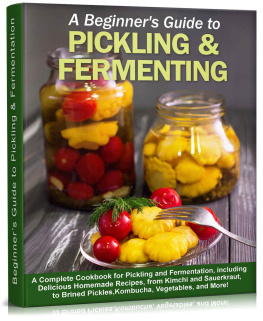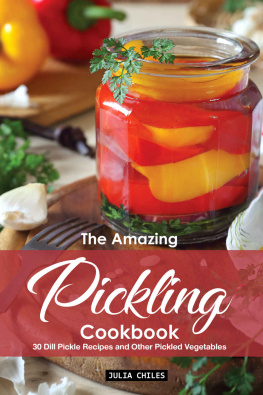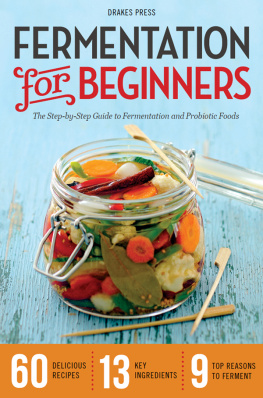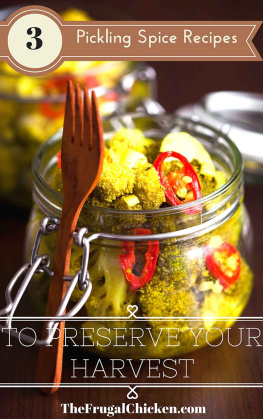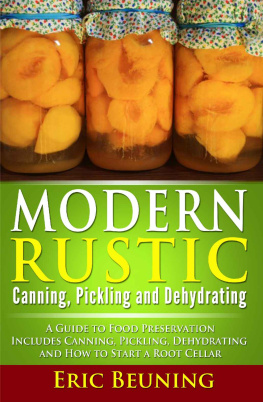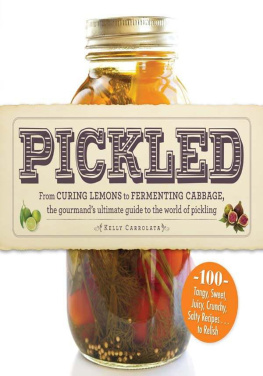Beginners Guide to Pickling & Fermentation
A Complete Cookbook for Pickling and Fermentation, including
Delicious Homemade Recipes, from Kimchi and Sauerkraut, to Brined Pickles, Kombucha, Vegetables, and More!
Collin Bradford
Copyright by Collin Bradford 2022 - All rights reserved.
The content contained within this book may not be reproduced, duplicated or transmitted without direct written permission from the author or the publisher.
Under no circumstances will any blame or legal responsibility be held against the publisher, or author, for any damages, reparation, or monetary loss due to the information contained within this book
Either directly or indirectly. You are responsible for your own choices, actions, and results.
Legal Notice:
This book is copyright protected. This book is only for personal use. You cannot amend, distribute, sell, use, quote or paraphrase any part, or the content within this book, without the consent of the author or publisher.
Disclaimer Notice:
Please note the information contained within this document is for educational and entertainment purposes only. All effort has been executed to present accurate, up to date, and reliable, complete information. No warranties of any kind are declared or implied. Readers acknowledge that the author is not engaging in the rendering of legal, financial, medical or professional advice. The content within this book has been derived from various sources. Please consult a licensed professional before attempting any techniques outlined in this book.
By reading this document, the reader agrees that under no circumstances is the author responsible for any losses, direct or indirect, which are incurred as a result of the use of the information contained within this document, including, but not limited to, errors, omissions, or inaccuracies.
Leave a review about our book:
As an independent author with a small marketing budget, reviews are my livelihood on this platform. If you enjoyed this book, Id really appreciate it, if you left your honest feedback. You can do so by clicking review button.
I love hearing my readers and I personally read every single review!
Table of Contents
Introduction

Pickling was a family tradition that found its way back to me when I decided to set up my own kitchen and find better ways to preserve fresh produce. Back in my childhood, special homemade pickles were shared as a holiday norm, and my mother was famous for her amazing pickling skills. That experience had left me with great many pickling secrets that I have shared in this cookbook as well.
Today, even when there are tons of commercially-produced pickles and fermented goods available in the market, I still recommend home preservation techniques to anyone who wants to eat healthily. It may seem like extra work, but the taste of the homemade pickles has no parallel. You get to use the ingredients that you find fit for your health. Anyone can customize a recipe to match his or her needs. Plus, there are lots of options that you can try. And if you happen to have an all-in-one pickling and fermentation book like this one, you will find it much easier to pickle and ferment food at home.
The Beginners Guide to Pickling and Fermentation brings you just the kind of easy- to-follow pickle recipes that you want. The book has two sections; the first one is about pickling, and the second shares everything that you need to know about fermentation. Each section starts with the basics about the processes, and then there is a comprehensive collection of recipes that you can try. So, let's start pickling!
Section 1: Pickling
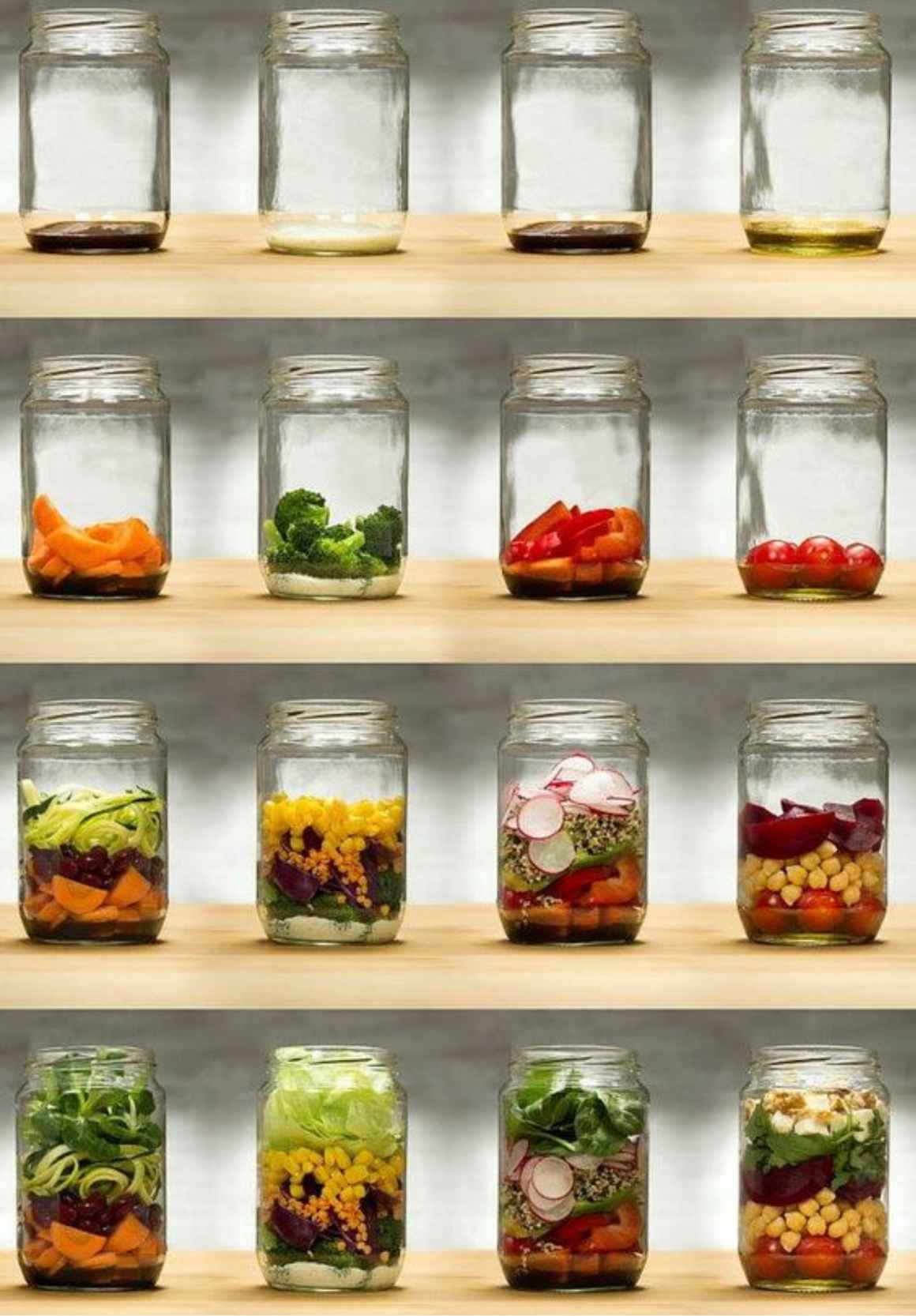
Chapter 1:
All you need to know before starting pickling
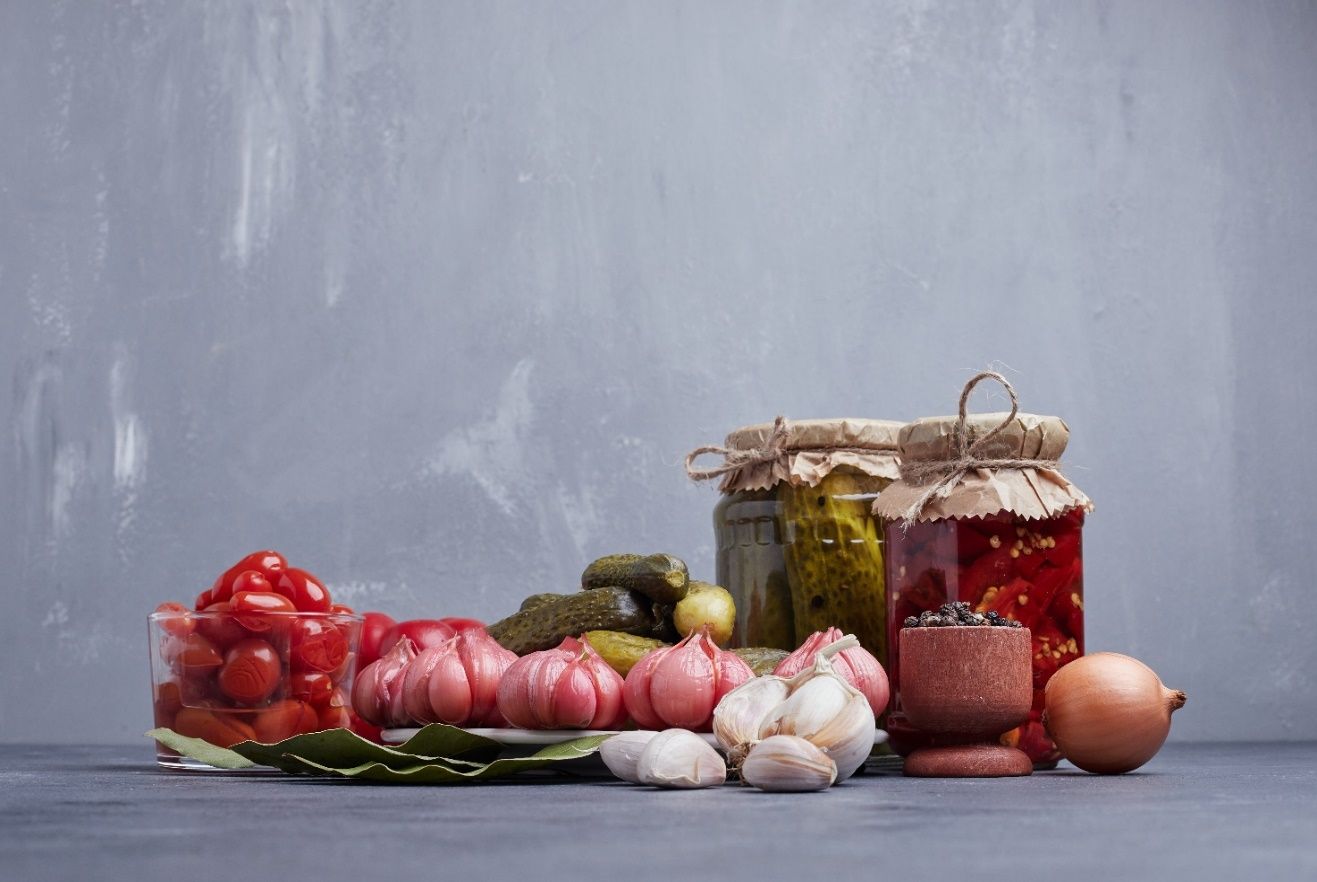
There is nothing more satisfying than pickling your home-grown plant produce and enjoying it for months in or with different meals and entres. It is a great way to preserve all those extra veggies in your refrigerator which may end up in the waste. With this pickling guide, you can now pickle almost any vegetable. It is super simple and easy. Some people believe that pickling is only for cucumbers; however, you can pickle almost anything. Pickling is a method of preserving food that involves either anaerobic fermentation or through keeping the food in vinegar. You can call a food pickled if its pH gets to 4.6 or lower. That is why during pickling, the harmful microbes cease to exist in the food and the pickled food enjoys a longer shelf life.
What is Pickling Spice, and How Does it Work?
Any beginner's guide to pickling should contain information on the spices to pair with your pickled vegetables. You can either buy pickling spice or manufacture your own at home. During the pickling process, it will add flavor and seasoning to your pickled food. The types of herbs and spices used in each pickle recipe differ; however, they commonly include:
- Bay leaves
- Mustard seeds
- Peppercorns
- Dried chili peppers
While pre-made pickling spices are available, it's far easier to make your own. Doing that, you can adjust its seasonings as per your preferences.
What Exactly Can I Pickle?
Pickling works well with a wide range of meals, but vegetables are the most popular. Vegetables with thick skin are the best. This helps the pickle keep its shape and remain crisp as a finished product. Some of my favorite pickled foods include:
- Cucumbers
- Zucchini
- Peppers
- Carrots
- Radishes
- Onions
- Fruits
- Eggs
- Herring
- Sausage
Because they have thicker skin and are shorter in length, certain cucumber varieties, such as the Kirby, are excellent for pickling. If you didn't cultivate your own vegetables, look for them at a farmers' market. Vegetables grown commercially may have a waxy layer that interferes with the pickling process. If you must use supermarket vegetables, make every effort to thoroughly clean them. Although it's best to pickle produce that has just been gathered fresh, you may also use purchased vegetables that are about to ripen. Pickling is an excellent preservation and flavor alternative to traditional canning for homesteaders who have an overabundant harvest this fall.
Pickled foods give a lot of flavors to meals and snacks. Spices, sugar, and vinegar are expertly blended with fruits and vegetables to produce a crisp, firm texture and a pungent, sweet-sour flavor. Although food shops today provide a broad selection of pickles and relishes, many homemakers choose to produce their own pickled items when fresh fruits and vegetables are plentiful.
Types of Pickles

Depending on the ingredients used and the techniques of preparation, several varieties of pickled items can be manufactured. There are four different types of classes:
Brined or fermented pickles
These are the pickles that have been cured for one or more weeks in a brine (salt and water) solution. Curing alters the product's color, flavor, and texture. If the product is fermented, the lactic acid created during the fermentation process aids in its preservation. The acid in the form of vinegar is mixed in to preserve brined items that are cured but not fermented.

